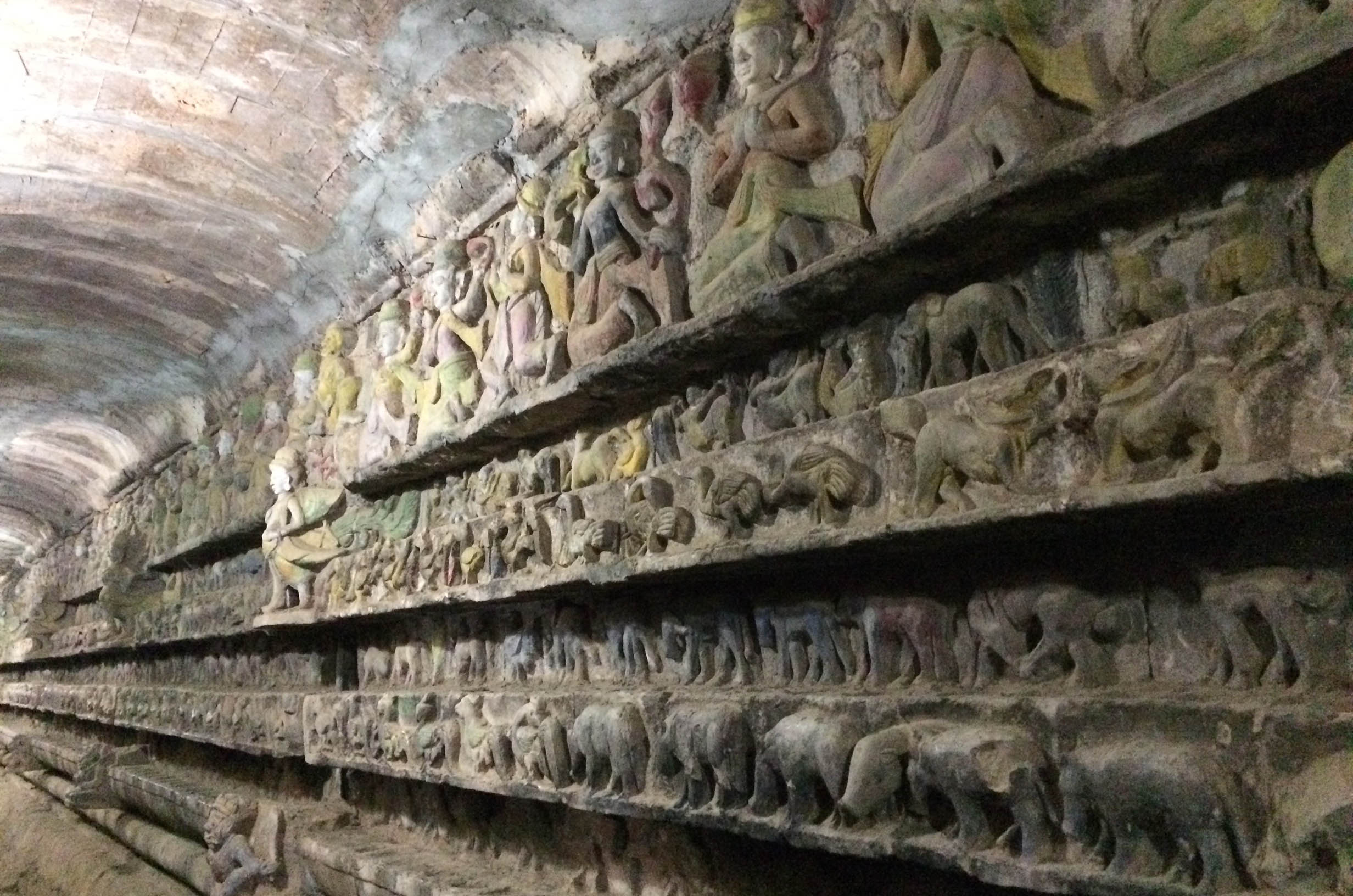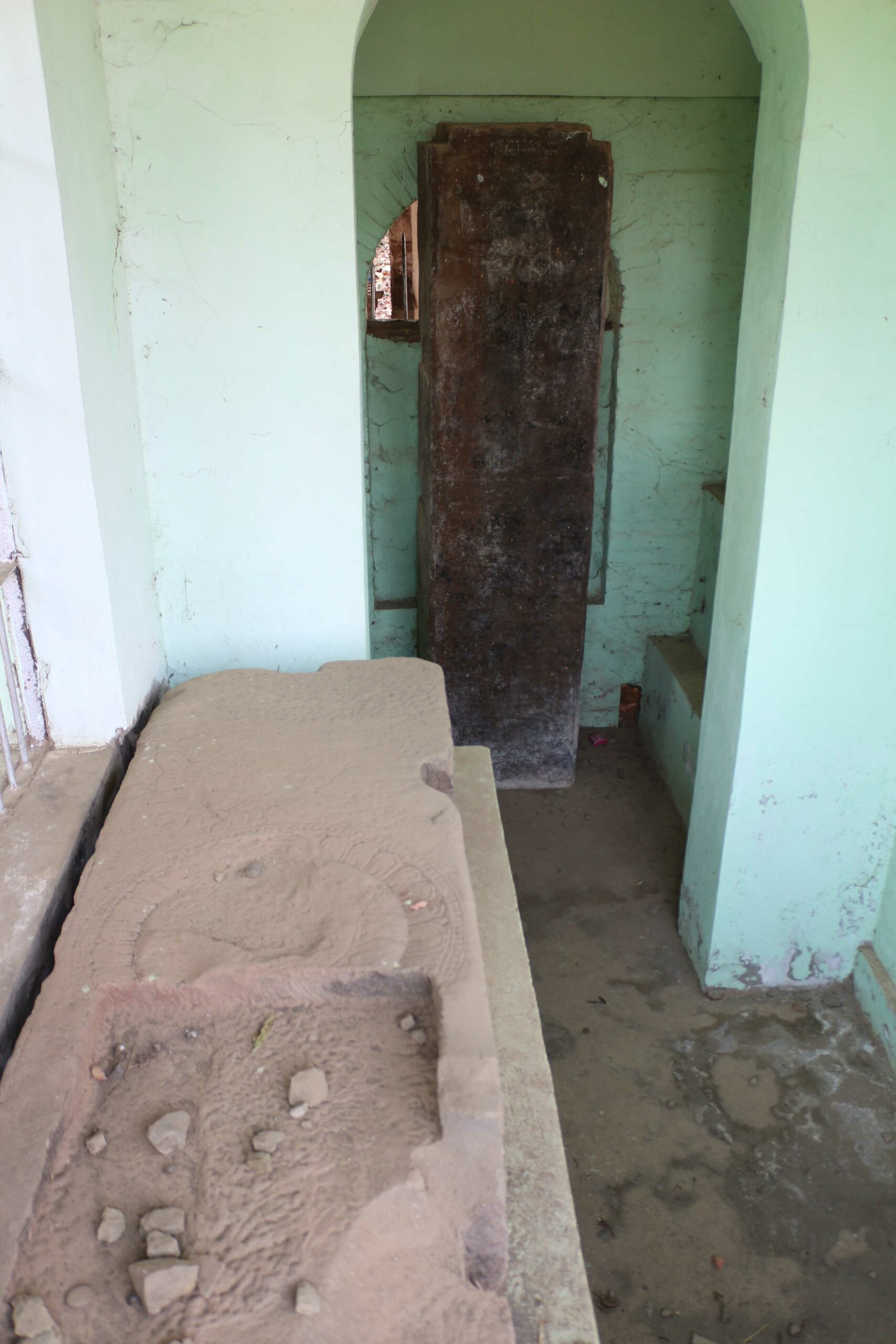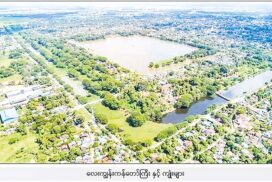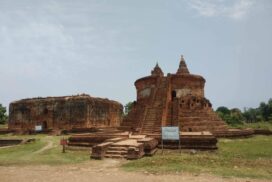By Win Zaw
Translated by
Than Tun Aung
Historic stupas and temples were built in ancient MraukU city of Rakhine State about 600 years ago. After King Min Saw Mon had established MraukU city, kings and people in successive eras built religious edifices in MraukU.
King Min Saw Mon, the last king of the Laungkyet dynasty established Rakhine’s Royal Palace MraukU on the 1st waxing of Tawthalin, 792 ME. At that time, the royal palace was about five square miles of area. In 17th century, MraukU traded with Portugueses, Dutchs, Indians and Persians in addition to enhancement of business relations with Inwa and Bago. As such, a period from 1600 AD to 1630 AD was dubbed as the golden era of MraukU.
In MraukU, where 48 kings reigned over from 1430 to 1784 AD, there were 375 stupas and temples, Pitakat chamber and ordination halls. Among them, Shitthaung, Koethaung, Htoke Kan and Andaw ordination stupas have been very famous in MraukU.
Andaw ordination stupa
Myanmar dictionary defines ordination hall as a venue for Buddhist monks to do religious procedures and stupas as pagodas made of bricks and stones. Ordination stupa can be defined as the pagoda used as an ordination hall where Buddhist monks do religious procedures.
Andaw ordination stupa takes a position near the northwest corner of Shitthaung Stupa, north of the royal palace mound of MraukU. Andaw and Htoke Kan ordination stupas are located at the end of the Pokhaung mountain range. Andaw ordination stupa was built by King Min Saw Hla or King Minhla Raza Saw Mon (1515-1521 AD) in 1521 AD. King Min Bar Gyi conveyed a duplicate tooth relic from Ceylon and enshrined it in the pagoda on Pathura Hill in Thandwe. In 1598, King Min Bar Gyi enshrined the tooth relic in the stupa built by King Minhla Raza Saw Mon and enveloped the stupa again. Since then, the stupa has been named Andaw ordination stupa.
Andaw ordination stupa made of shale stones is 228 feet long, 145 feet wide and 42 feet high. The Gandakuti chamber rounded by a double tunnel was built in the centre of the stupa. Lighting holes were built to fall lighting onto Gandakuti chamber and tunnels. As such, architectural works in the MraukU era can be assessed.
Eight stone–carved thrones were placed in eight dimensions around the pivot of the stupa. Eight Buddha images were kept on the thrones. Small Buddha images were kept on the wall arches along the tunnel. Six standing Buddha images are placed on the eastern wall. Scholars assumed one of six Buddha images carved in a systematic ratio might be the earliest work. A total of 175 Buddha images, small and large, were kept in Andaw ordination stupa, which is under maintenance of the Department of Archaeology and National Museum.
The history of Andaw ordination stupa mentioned that it was built by King Minhla Raza Saw Mon in 1521 AD, King Min Phalaung in 1591 AD and King Min Raza Gyi in 1596 AD. Shitthaung and Htoke Kan ordination stupas, Yadanapon Pagoda, Laungpunpyauk, Anawma Pagoda and Pitakat chamber, are located near Andaw ordination stupa.
Htoke Kan ordination stupa
Htoke Kan ordination stupa takes a position north of MraukU Royal Palace mound and west of Shitthaung Stupa. Htoke Kan ordination stupa was built by King Min Phalaung in 933 ME to contribute to the strengthening of MraukU Royal Palace. The stupa was built again by King Min Saw Hla from 917 to 926 ME.
Htoke Kan ordination stupa built on 20 feet high hillock opposite Shitthaung Stupa was 137 feet long from the east to the west and 110 feet wide from the south to the north. From the foot of the stupa to the apex of the hillock, it was 64 feet high. The stupa was made of shale stones in the shape of a fort. It was formed with a double tunnel. The stupa was flanked by one each of encircling Ceti at each corner. These encircled Cetis have hoisted mushroom shape umbrellas.
Castle shaped Htoke Kan ordination stupa was formed with wide corridors and spiral tunnels. The entrance to the tunnel was slightly narrow but the inside part was wide. Lighting holes were created along the tunnel. Floor of the tunnels was paved with glaze. Arches on the wall of the tunnel were filled with Buddha images flanked by reliefs of royal families. Costumes of reliefs were in designs of the mid-MraukU era. Originally, the reliefs were painted with colourful glaze.
An entrance led to the hall. Some scholars said statues of a man and a woman paying homage to Buddha image with lotus flowers seen on both sides of backdrop might be statues of the royal family. Hair, headdress and costumes of statues proved the culture of the MraukU era.
The records in ancient buildings in the MraukU area showed 40 kinds of turban, nine kinds of sashes, five kinds of belts, 81 kinds of rings, nine kinds of necklaces, nine kinds of scarf joints, 16 kinds of star, 20 kinds of bracelets, five kings of floral works, eight kinds of hairpins, eight kinds of sculptural works, seven kinds of toe rings, five kinds of duplicates and 64 kinds of hairstyles.
A large hall in the stupa was used as organizing the Pavarana ceremony for the abbot of the king. Edges around the wall of hall were used as putting oil lamps. A Buddha image under the main pagoda was cast of nine kinds of jewellery.
It needs to take 18 steps onto the terrace of the stupa. While stepping up, travellers can see Shitthaung Stupa. They can enjoy a scene of Laymyethna Stupa from the west part of the Htoke kan ordination stupa. Theinganadi Creek flows along the western part of the stupa. A long stone carved into Byal statue and celestial being statues were seen on the left side of the eastern ladder to the stupa. It was known as such stone was installed on the stupa.
Some scholars assumed as the Htoke Kan ordination stupa was built in large volume, people took shelter of it in the wars and it was used as a fort.
Byal
It was a statue formed with comb of dragon or elephant trunk, deer eye, rhino horn, tongue of parakeet, body of Toenaya (mythical animal), facets on germs, hair of yak or tail of peacock, ear of elephant or horse, legs and mane of lion, and fang of tiger. Rakhine ethnics call statue of Byal as a mascot of the booming economy, and it was also called Shahtokkay.
Rakhine ethnics build Byal statues on walls of religious edifices, top of backdrops, posts of backdrops, arch of thrones and thrones of Buddha images dedicating to ensuring peace and prosperity. Byal statue at Shukhintha park in Sittway is 15 feet long and 12 feet high. A signboard bears the nature of the Byal statue in Myanmar and English languages.
Currently, the government is maintaining ancient buildings, including Andaw and Htoke Kan ordination stupas. MraukU in Rakhine State is an ancient area flourishing Buddhism due to mushrooming of stupas and temples. The mound of Royal Palace, Pitakat chamber, ordination hall, walls and moats, including stupas and temples in MraukU, are attractive to local and foreign travellers as well as researchers.
References:
Ancient buildings in MraukU area (Ministry of Culture)
Lectures on DMHC course (Dr Kyaw Win)
Notes on travels















